The sun rose lazily over the capital, and so did I. Today was not just another day of riding—it was the first day of my long-awaited journey into the northern valleys of Pakistan. My destination for the evening was Kutton, a quiet spot in Azad Kashmir famous for its emerald valley and the nearby Baboon Valley, which I planned to explore the following day.
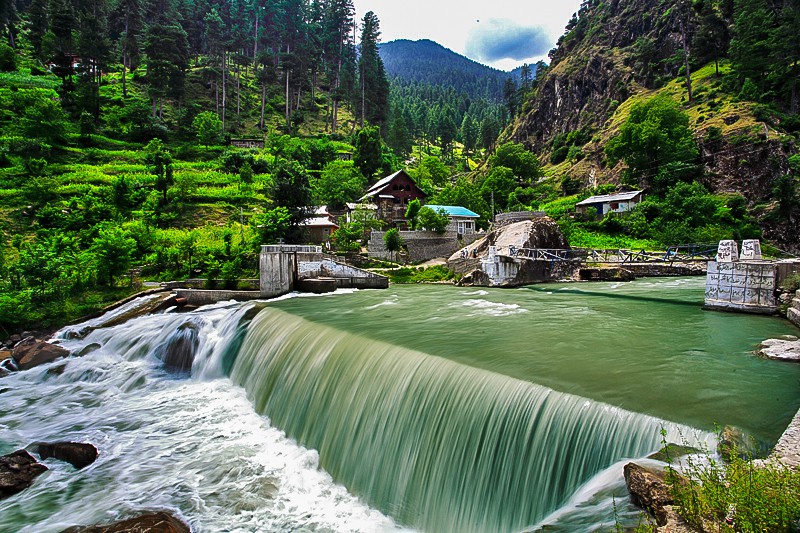
The excitement in my heart was unmatched. I had been preparing for this trip for months, and today the adventure finally began. Ahead of me stretched more than 200 kilometers of mountain roads. It didn’t look too far on the map, but I knew from experience that in the mountains, distance is measured not by kilometers but by hours, by turns, and by the patience of the traveler.
Escaping the City
I purposely left a little later in the day to avoid Islamabad’s morning rush hour. Traffic in big cities can drain your energy before you’ve even begun your trip, and I wanted to conserve my enthusiasm for the mountains.
Still, the roads were alive with commuters, rickshaws buzzing past like dragonflies, cars weaving between lanes, and the occasional heavy truck belching smoke. I rode carefully, trying to avoid any sudden surprises—because in Pakistan, the road is full of them. At one point, I even saw a man holding a stick outside his car window for no apparent reason. This country never fails to keep a traveler alert.
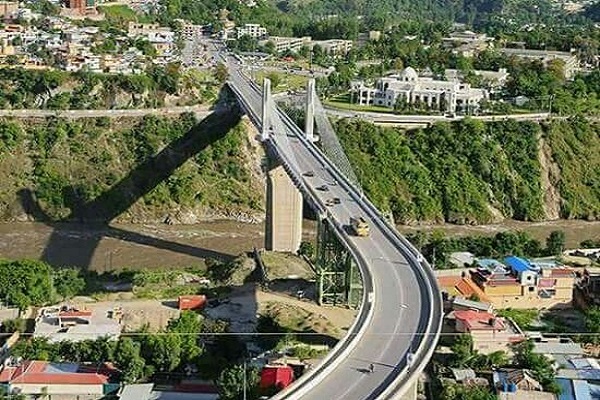
I needed to get fuel before leaving Islamabad. High-octane petrol is relatively easy to find in the city, but in Kashmir it becomes rare. It’s always best to fill the tank at the start. After some searching, I found a station near Kashmir Square, appropriately named since Kashmir was where I was headed.
With the tank full and the bike humming contentedly, I set off. A road sign confirmed it: Muzaffarabad 116 km.
Into the Hills
The road to Muzaffarabad passes through Murree and then winds its way into Azad Kashmir. I had been told by locals to avoid the main Murree–Kohala highway after Lower Topa because of poor conditions, so I opted for the Bhurban road instead.
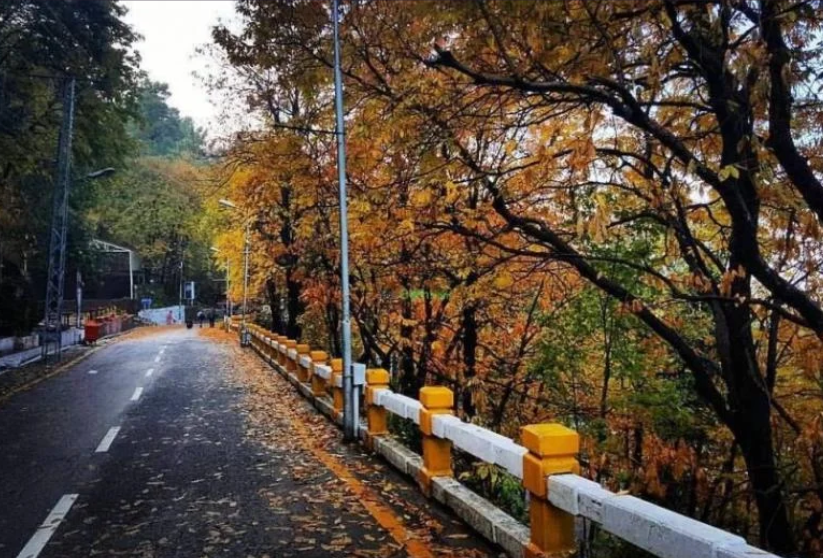
As I climbed higher, the fog thickened. The visibility dropped to just a few meters. At times it felt as if I was floating inside a cloud, the world around me reduced to a soft, white blur. Riding in such conditions is tricky—you can’t go beyond 30 km/h, and every blind curve demands complete focus.
My plan of a leisurely ride through quiet villages quickly vanished. The Bhurban road turned out to be surprisingly busy, filled with cars and small towns strung together one after another. I had imagined peaceful stretches through pine forests, but reality was different. Yet, even with the traffic, the charm of these mountain roads was undeniable.
A Scare on the Road
Somewhere about 30 kilometers from Muzaffarabad, I noticed something unsettling. My rear brakes didn’t feel right. For a motorcyclist, brakes are life, and losing them in the mountains is a nightmare.
I immediately pulled over, drank some water to calm myself, and checked the brakes carefully. To my relief, they were fine—it had just been a false alarm. Still, those few moments of uncertainty left me shaken. After all, this was only the first day of my northern journey, and the last thing I needed was mechanical trouble.
With renewed caution, I pressed on. The valleys were opening up, and the mountains of Kashmir loomed ahead, majestic and mysterious.
Arrival in Muzaffarabad
Muzaffarabad is the capital city of Azad Jammu and Kashmir (AJK), Pakistan. It is strategically located at the confluence of the Jhelum and Neelum rivers, surrounded by the Himalayan and Pir Panjal mountain ranges. The city lies approximately 116 km from Islamabad.
Muzaffarabad has a rich historical and political background:
Founding: The city was founded in 1646 by Sultan Muzaffar Khan, after whom it is named. He belonged to the Chak dynasty and played a key role in establishing the city as a regional center.
Geography and Climate:
-
Muzaffarabad sits in a mountainous valley with lush green hills surrounding the city.
-
The city experiences moderate summers and cold, snowy winters, with heavy rainfall during monsoon season.
-
The terrain makes it prone to earthquakes and landslides, notably the 2005 earthquake, which caused significant damage in the region.
Culture and Society:
-
The city reflects Kashmiri culture in its architecture, food, and language.
-
Traditional markets (bazaars) sell handicrafts, woolens, and local Kashmiri products.
-
Festivals and religious events are celebrated with traditional music, dance, and cuisine.
By mid-afternoon, I rolled into Muzaffarabad, the capital of Azad Kashmir. Nestled between the Jhelum and Neelum rivers, this city is both scenic and strategic. It has endured earthquakes, wars, and political struggles, but today it bustled with life like any other town.
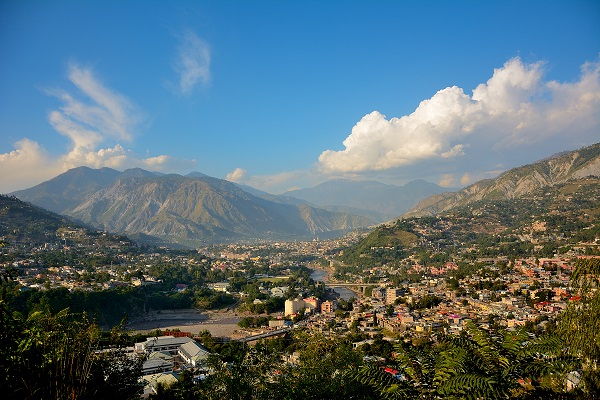
I had two important tasks here.
First, I needed a new SCO SIM card. In this region, most networks don’t work reliably—only the government-run SCO provides good coverage. For someone traveling alone, being able to contact family or ask for help is essential.
Second, I had to stock up on supplies. Camping and riding long distances mean carrying food that is easy to cook. My favorite? Spaghetti. Light, cheap, and filling, it had already become my travel companion. I bought enough to last a few days.
After finishing my errands, I took the bypass road out of Muzaffarabad. The city quickly gave way to raw beauty—mountains rising on both sides, the river flowing with a thunderous voice, and the road twisting like a ribbon through the valley.
Riding Along the Neelum River
The Neelum River is not just a body of water; it’s the lifeline of this region. Flowing fiercely beside the road, it carried with it both beauty and danger. At many points, landslides had scarred the road. In some places, half the tarmac had collapsed into the river, leaving only a narrow strip for vehicles to pass.
Signs warned against stopping, but many tourists couldn’t resist pulling over for selfies. I rode past quickly, unwilling to risk a boulder falling on my head.
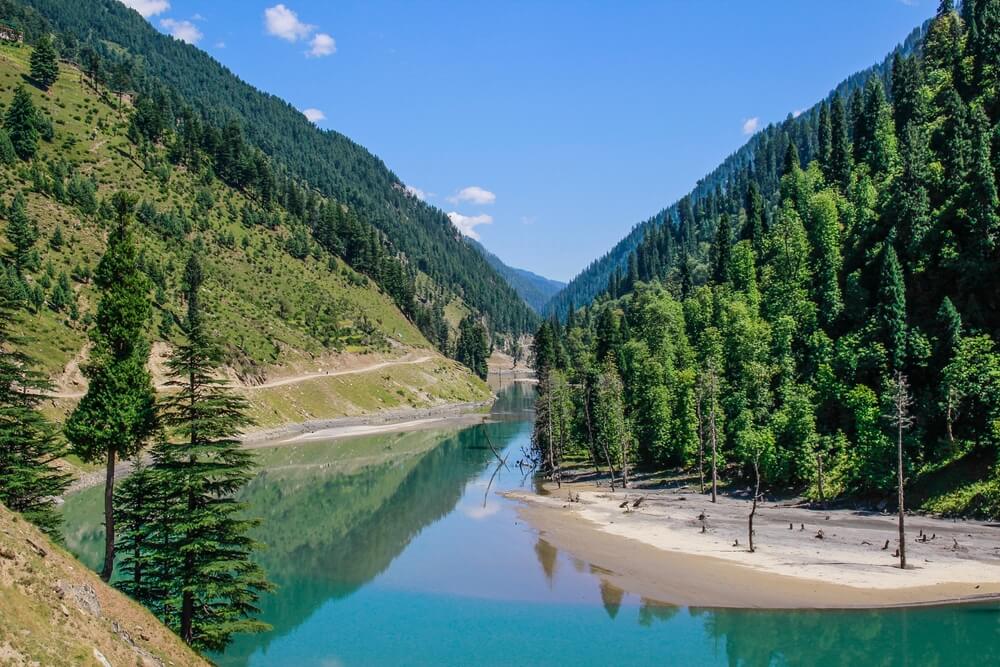
This stretch of road was among the most scenic I had ever seen. The closer I got to the border, the more dramatic the scenery became.
The Bridge Between Two Worlds
At one point, my navigation showed a thin line—it was the India-Pakistan border kashmir. For the first time in my life, I found myself staring directly at India, separated only by the river. The India-Pakistan border in Kashmir is part of a larger territorial dispute over the Jammu and Kashmir region. This line is officially known as the Line of Control (LoC), which serves as the de facto border between Indian-administered Jammu & Kashmir and Pakistan-administered Azad Jammu and Kashmir (AJK).
-
Tourists in Azad Kashmir can see views of the Indian side from some high points, rivers, and bridges.
-
Interactions are limited to visual communication, and crossing the border is generally not allowed for ordinary civilians.
-
The area is breathtakingly scenic, with mountains, rivers, and forests making it one of the most picturesque border regions in the world.
Here stood a bridge, guarded on both ends. On the Pakistani side, there was a small check post where officers asked for my identification. I showed them my POC card, and they waved me through.
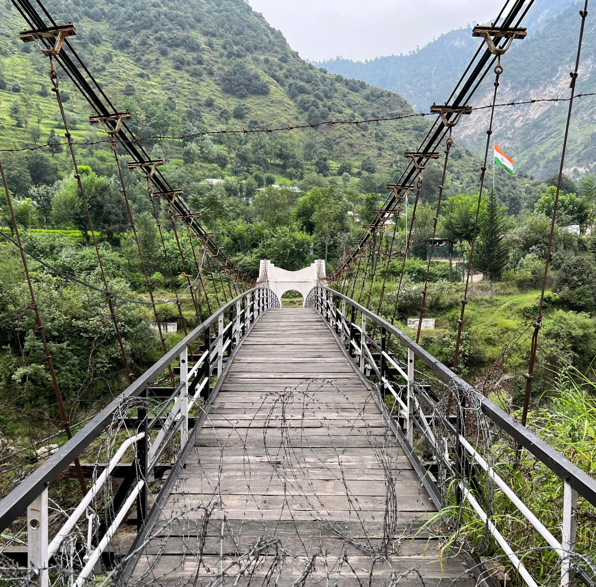
Locals told me fascinating stories about this bridge. People from both sides sometimes come to the ends and wave at each other across the water. Some even write letters, seal them in bottles, and throw them into the river, hoping they will reach loved ones on the other side. Imagine that—a fragile message carried by the river, crossing borders where humans cannot.
It was surreal. Standing there, hearing the roar of the river, I felt the weight of history, politics, and human longing.
Towards Kutton
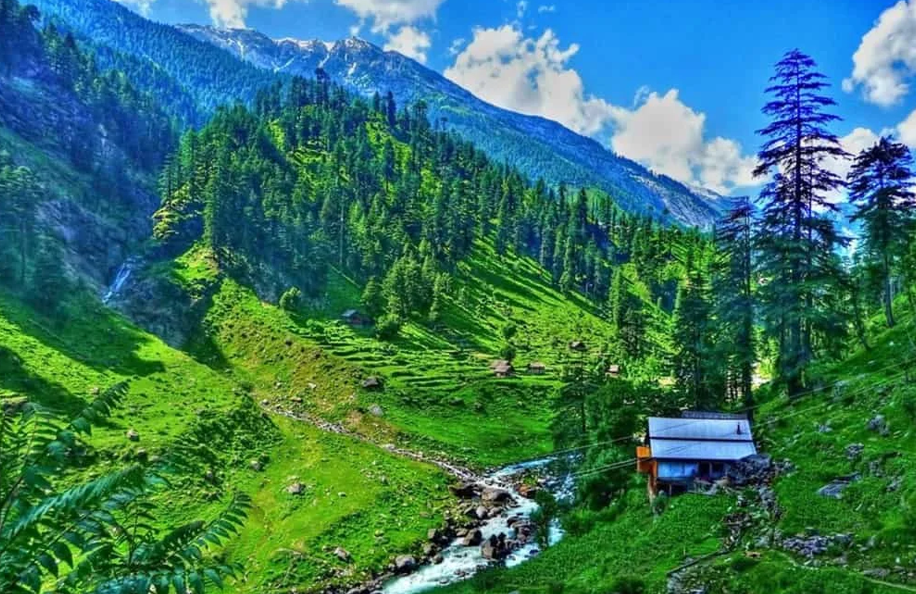
From the bridge, I pressed on. The light was beginning to fade, and I still had about 37 km to Kutton. My motorcycle roared happily along the curves, suspension bridges swayed under my wheels, and the mountains turned golden under the setting sun.
Soon, I passed through Jagran, a small settlement with the loud music of rushing water everywhere. Pipes carried water from the river to what seemed like a hydropower station. The valley here was breathtaking—dense forests, crystal-clear water, and cool mountain air that refreshed every sense.
Finally, as dusk approached, I reached Kutton Resort.
The Hunt for a Room
Kutton Resort is government-run and usually crowded with families. At the reception, the attendant told me there were no rooms available. My heart sank. After an 8-hour ride covering more than 220 kilometers, the thought of searching for another hotel in the dark was discouraging.
Then, luckily, he realized I was traveling alone and offered me a small single room—the last one available. It wasn’t fancy, just a bed in a simple space, but it was all I needed. The price was 1500 rupees, set by the government. Family rooms were 2500 rupees, but those were already booked.
The only downside? No charging ports. My cameras and phone were nearly dead. I still had to figure out a solution for that.
But for now, relief washed over me. I had a roof over my head, a safe place to rest, and food waiting in the kitchen.
Evening in Kutton
Kutton, also known as Jagran Valley, is a picturesque village nestled in the Neelum Valley of Azad Jammu and Kashmir, Pakistan. Located approximately 98 kilometers from Muzaffarabad, the capital of Azad Kashmir, Kutton is accessible via the Neelum Road, which branches off from Kundal Shahi.
Historical Significance
The region encompassing Kutton has a rich history, particularly during the medieval period when it served as a crucial segment of the Silk Route. This ancient trade route facilitated the movement of traders, explorers, and invaders, making the area a melting pot of cultures and traditions. The remnants of ancient caravanserais and forts stand testament to its historical significance during this era.
Modern-Day Kutton
In contemporary times, Kutton has transformed into a popular tourist destination, renowned for its natural beauty and serene environment. The village is adorned with lush green forests, majestic mountains, and crystal-clear streams that flow through the heart of the valley. The majestic pine trees and vibrant flowers add to the charm, creating a postcard-perfect landscape that captivates visitors from all around.
The area is also known for the Kutton Waterfall, a stunning natural attraction that draws both locals and tourists alike. The presence of rest houses managed by the AJK Tourism and Archaeology Department, as well as private accommodations, ensures that visitors have a comfortable stay while exploring the valley.
Cultural Heritage
Apart from its natural beauty, Kutton Valley also boasts a rich cultural heritage. The local residents are known for their warm hospitality and friendliness towards visitors. Exploring the nearby villages provides an opportunity to experience the local culture, traditions, and lifestyle of the people. Visitors can savor traditional Kashmiri cuisine, interact with the locals, and witness colorful festivals and cultural events, enhancing their overall experience in the valley
Dinner was simple but delicious, eaten quickly after the long day’s ride. Then I stepped outside onto the terrace. The night was cool, the air filled with the sound of the rushing river. Stars peeked through the thin clouds, and the valley glowed faintly in the moonlight.
I reflected on the day. I had expected to reach Kutton in 4–5 hours, but the mountains had stretched the journey to over 8 hours. That’s the reality of traveling here—plans bend to the rhythm of the landscape.
But I had no regrets. From the misty climbs of Murree to the heart-stirring sights of the Neelum River, from the laughter of shy children in Islamabad to the stories of border bridges, every moment had been a gift.
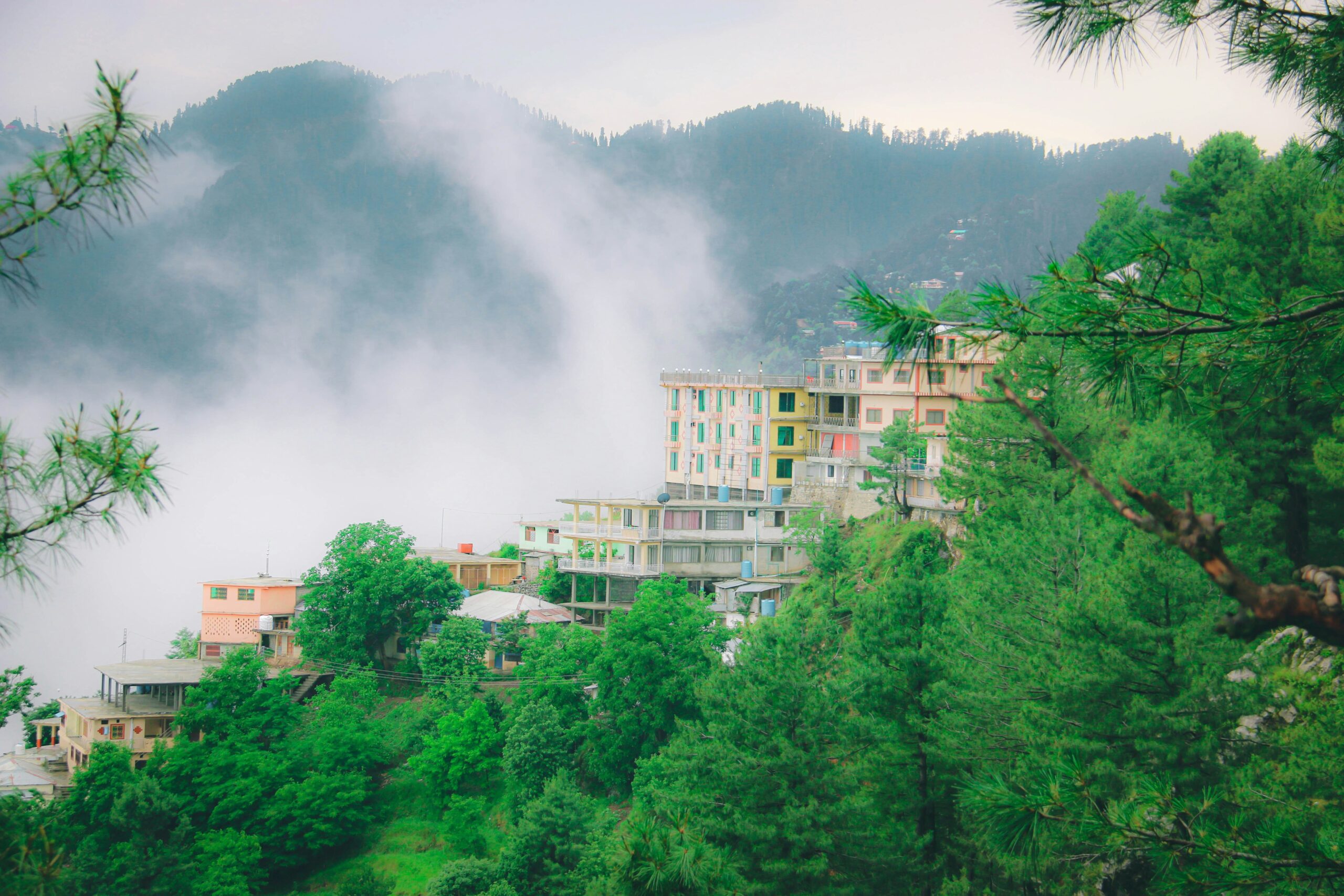
Tomorrow would bring new adventures—exploring the Baboon Valley, one of the hidden gems of Neelum. But tonight was for rest, gratitude, and quiet awe at the journey so far.
As I lay in my modest room, the thunder of the river outside lulled me to sleep.
The road had led me here, and tomorrow, it would lead me further into the mountains.








